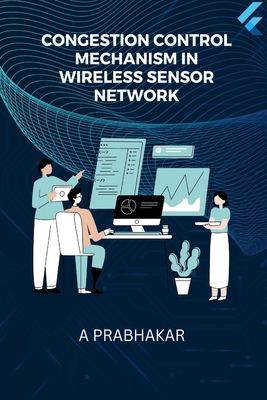You are here
Back to topCongestion Control Mechanism in Wireless Sensor Network (Paperback)
Email or call for price
Description
Wireless sensor networks (WSNs) are networks of small, low-power devices that are equipped with sensors, a microcontroller, and a wireless communication module. These devices are designed to work together to monitor and collect data from their surroundings, and transmit that data wirelessly to a central base station or a cloud-based server for further analysis.
WSNs are often used in applications where it is impractical or infeasible to use wired sensors, such as in remote or hard-to-reach locations, or in environments where there is a need for mobility or flexibility. Examples of applications for WSNs include environmental monitoring, industrial automation, security and surveillance, and healthcare.
WSNs are characterized by their low-power requirements, low cost, and small size, which make them well-suited for deployment in large numbers. They are also able to operate autonomously, which makes them useful for applications where it is not possible or practical to have a human operator constantly monitoring the system.
Congestion control is a mechanism used to regulate the flow of data within a network so that the network resources are used efficiently and fairly. It is designed to prevent network congestion, which can occur when too many devices or users attempt to transmit data simultaneously, resulting in a bottleneck that slows down the entire network.
There are several methods that can be used for congestion control, including:
Flow control: This involves regulating the flow of data between two devices to prevent the sending device from overwhelming the receiving device.
Error control: This involves detecting and correcting errors that occur during data transmission, which can help to reduce congestion on the network.
Traffic shaping: This involves regulating the amount of data that is transmitted over the network at any given time, to help prevent congestion.
Congestion avoidance: This involves proactively managing the flow of data to avoid congestion before it occurs.
Wireless sensor networks comprises of QoS and unique challenges. Wireless sensor networks, therefore, need congestion control to deal with design issues mentioned below:
Interference avoidance: Cluster agent must avoid primary channel interference.
Quality of Service: Transmission using appropriate spectrum band, considering the complex congestive atmosphere.
Continuous communication: Cluster agent, should provide flawless communication.
Mission critical applications: Cluster agent to analyze and transmit to base station.
